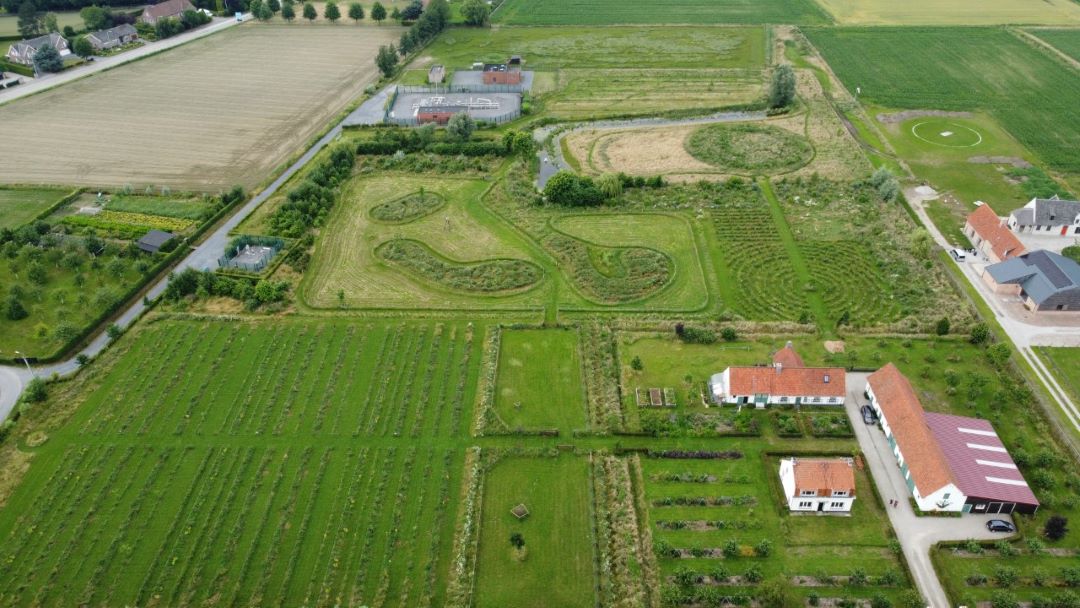Eetbos Deinze
This trial aims to document the productivity of fruit trees and berry-producing shrubs in a food forest with companion plant diversity. The productivity in terms of bulk weight and quality will be monitored over a time period of at least 10 years. Financial return will be assessed as well by monitoring all costs (labour, netting, weeding,…) and benefits.
The effects of companion plant identity and diversity on other ecosystem services, including soil carbon stocks, soil nutrient status, and the diversity of soil biota will be monitored too.
The experiment has been planted in November – December 2020. Monitoring will last at least 10 years. This trial is a collaboration between Eetbos Deinze (Piet Moerman), UGent (Prof Kris Verheyen, Prof Filip Debersaques, Prof Jan Mertens) and ILVO (Dr. Ir. Bert Reubens).
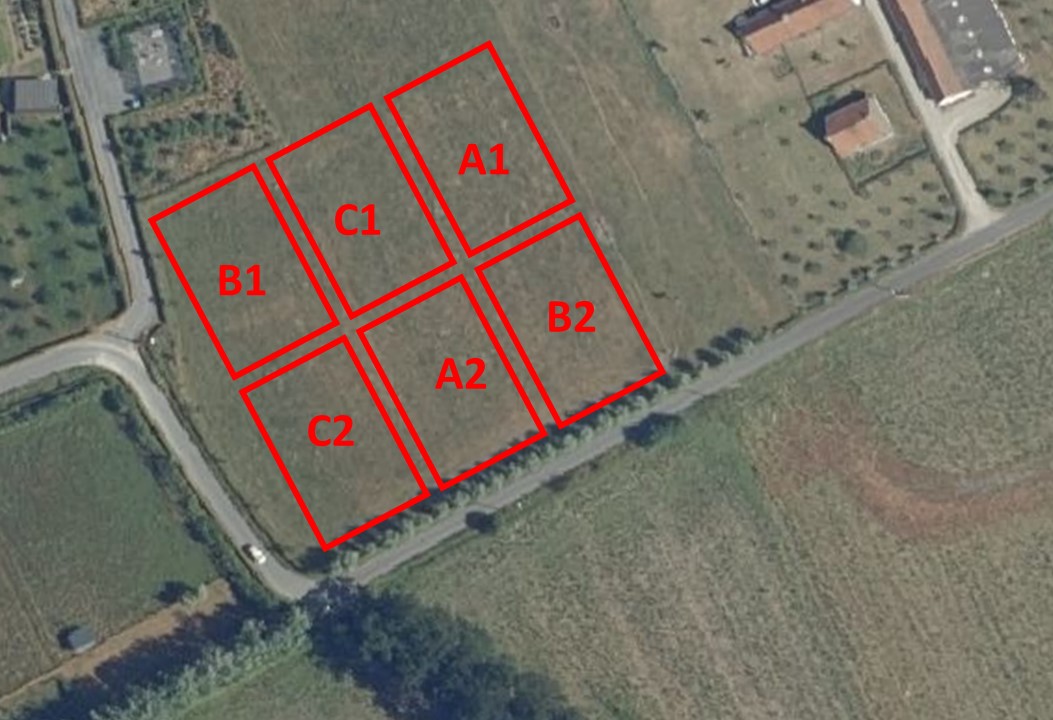
Design
Two levels of companion plant diversity and one control are present. Both levels as well as the control are replicated once. The control plots consist of fruit trees and berry producing shrubs without companion plants. In the first companion plant treatment (B) all fruit trees will be accompanied by six plants that produce high quality litter (acquisitive type). In the second treatment, three of the six companion plants are replaced by N2-fixing species.
The plots measure 35m x 23m (805 m2) and the alleys between the plots are 3m wide. The planting scheme is shown below, with A being the two controls and B and C the two companion plant treatments.
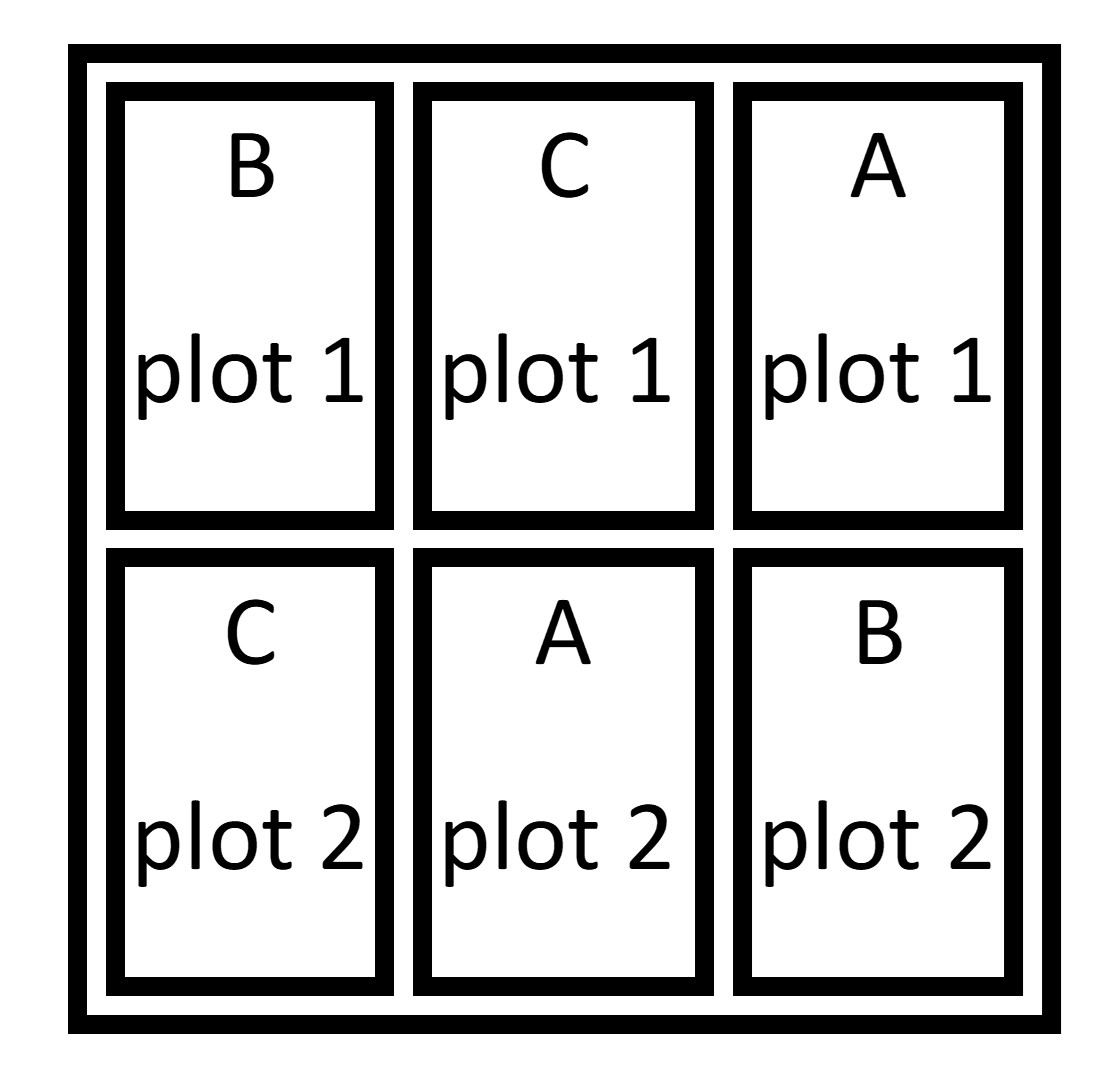
The experimental area has been a meadow for at least the last 5 years. Chemical analysis shows that the soil is relative rich in nutrients. The soil texture is sandy loam.
The design of the plots aims to maximise production in monetary terms by:
- Selection of the right varieties for disease resistance, taste and production quantity;
- Optimisation of resource (light, water and nutrient) use;
- Improvement of the soil quality by optimisation of the leaf litter layer (In the two treatment levels);
- Optimisation of harvest effort by also facilitating self-picking;
- Cost efficient bird protection;
- Efficient overall cost and time management.
Composition of the companion plant treatments: All the plots contain the same production crops, planted in the same position in the respective plots according to the best practices for optimal water, light and nutrient use. The treatments focus on companion plant diversity:
- The A plots have no companion plants, except the spontaneously emerging graminoids and herbs.
- The B plots contain six companion plants per fruit producing tree. These plants are selected from a pool of twelve species that produce high quality litter for soil quality improvement.
- In the C plots, half of the companion plants consist of high quality litter species, whereas the other half consists of N2-fixing plants selected from a pool of five species.
A full overview of the planting scheme can be found here.
Site characteristics
| Eetbos (Deinze) | |
|---|---|
| Country | Belgium |
| Biome | temperate |
| Latitude | 50.96 |
| Longitude | 3.54 |
| Soil type | sand (2/3) loam (1/3) |
| Former land use | cropland: potatoes, maize, and pasture last 5 years |
| Altitude | 9.5 m |
| Design | see scheme |
| Plot shape | rectangular |
| Plot size (m^2) | 805 m² |
| Plant distance (m) | see scheme |
| Number of trees planted | 216 trees, 800 shrubs |
| Planting date | 2020 |
| Diversity variables | species richness functional diversity |
| Size species pool | 12 acquisitive plants, 5 N2-fixing plants, 12 fruit and berries |
| Species pool | Salix alba Tilia cordata Viburnum tinis Viburnum opulus Philadelphus coronarius “Virginale” Euonymus europaeus “Red Cascade” Ligustrum ovalifolium “Aureum” Cornus mas Carpinus betulus Lonicera pileata Symphoricarpos x chenaulti “Hancock” Rosa rugosa Sophora japonica Cercis canadensis “Forest Pansy” Cystisus x praecox “Allgold” Hippophae rhamnoides “Leikora + Pollmix” Elaeagnus ebinghei Pyrus communis (“Bon Chrétien Wiliam”, “Gieser Wildeman”, “Double Flup”) Prunus domestica (“R. Claude d’ Althan”, “R. Claude Crottée”, “Prune de Prince”) Lonicera caerulea var. Kamtschatica (“Balalaika”, “Bee Myberry”) Rubus fructicosus (“Thornless Evergreen”, “Hull Thornless”) Prunus persica (“Fertile de Septembre”, “Avalon Pride”) Pyrus pyrifolia (“Hosui”, “Kosui”, “Nijiseki”) Ribes nigrum × uva-crispa “josta” Ficus carica (“Brown Turkey”) Malus domestica (“Topaz”, “Pinova”) Ribes rubrum (“Junifer”, “Rovada”) Ribes uva-crispa (“Invicta”, “Hinoimäki rod”) Rubus idaeus (“Glen Ample”, “Autumn Bliss”) |
| Contact person | Piet Moerman |
| piet.moerman@yahoo.com |
Research
This trial aims to quantify the effects of companion plant diversity on the productivity of commercial plantings (apple, pear, peach, nashi, plum, fig, currents, gooseberry, honeyberry, blackberry, raspberry and rhubarb). We will measure the production (quantity, quality), the impact on soil quality, and all inputs (labour) and outputs (ecosystem services) to answer the question whether the companion plants are beneficial or merely causing competition for resources.
Management
In all plots the same pruning, support (binding) and mulch techniques will be used. There will be no use of chemical pesticides, herbicides, fungicides or fertilizers. Maintenance of the herb layer in the control A –plots is limited to mowing. Weeding will be limited to the removal of invasive or greatly obstructive plants such as wild blackberries.
Extra information
For extra information you can send an e-mail to the contact person or have a look at this poster.
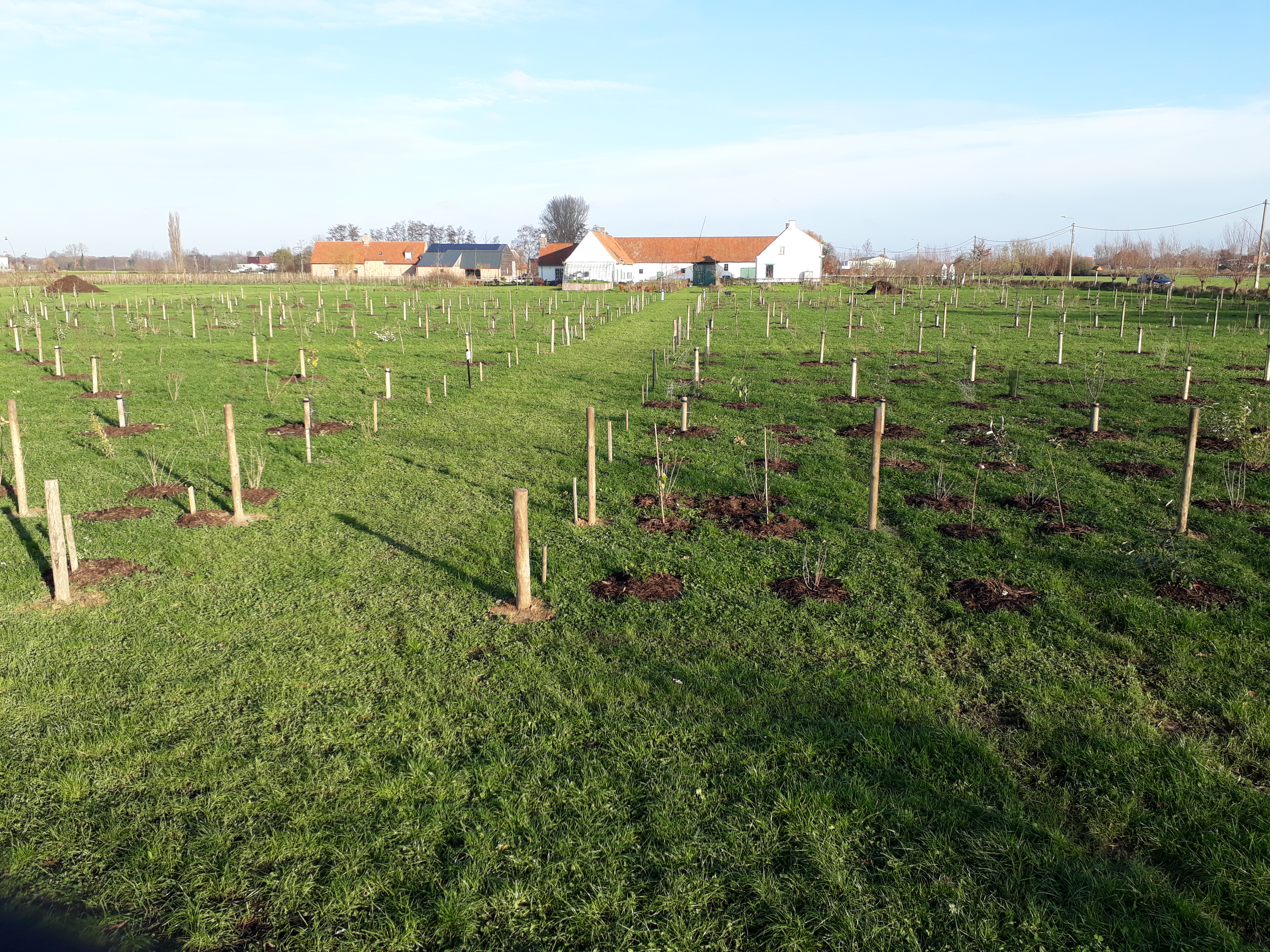
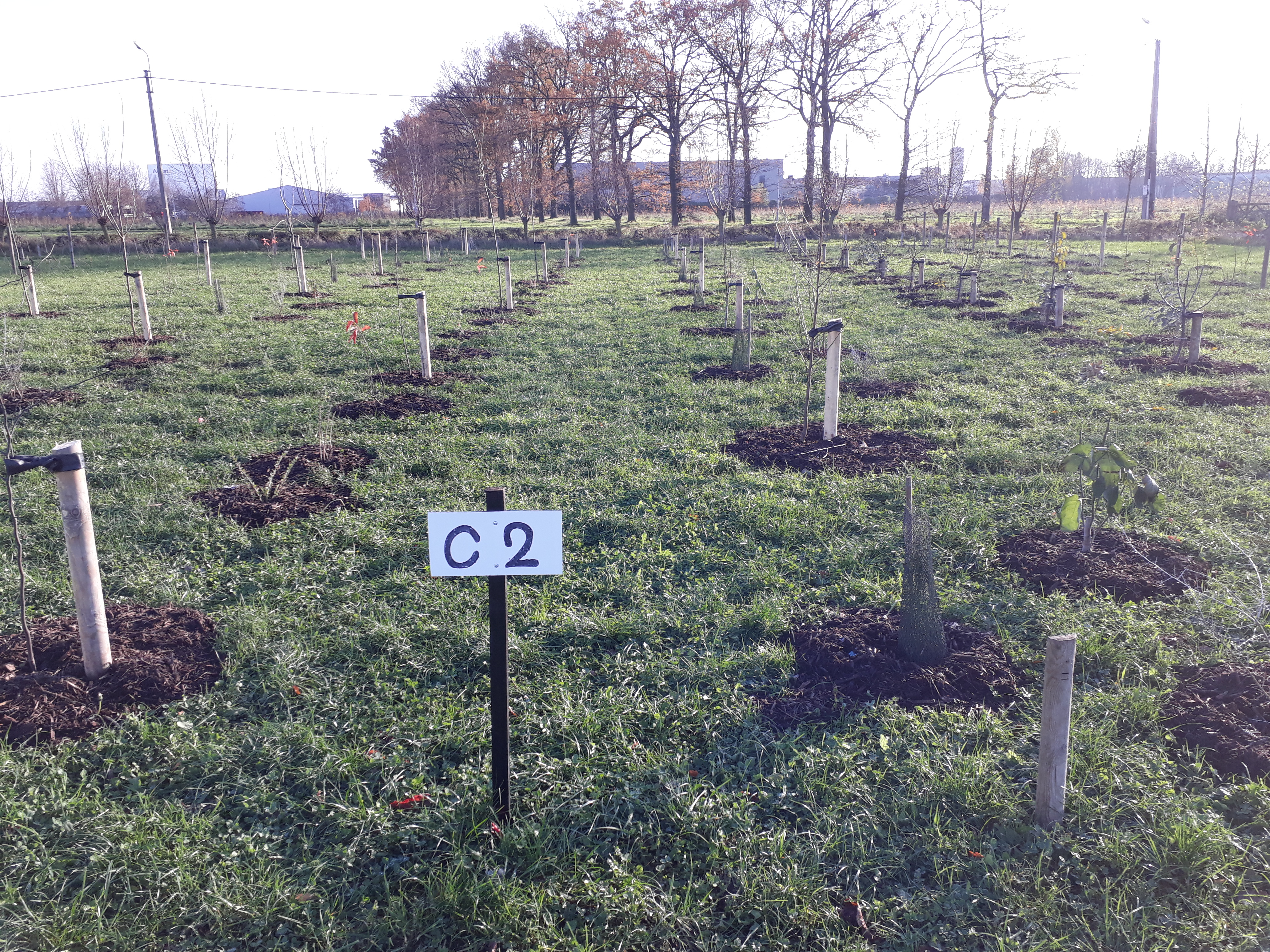
[Pictures of the trial just after planting in autumn 2020.]
